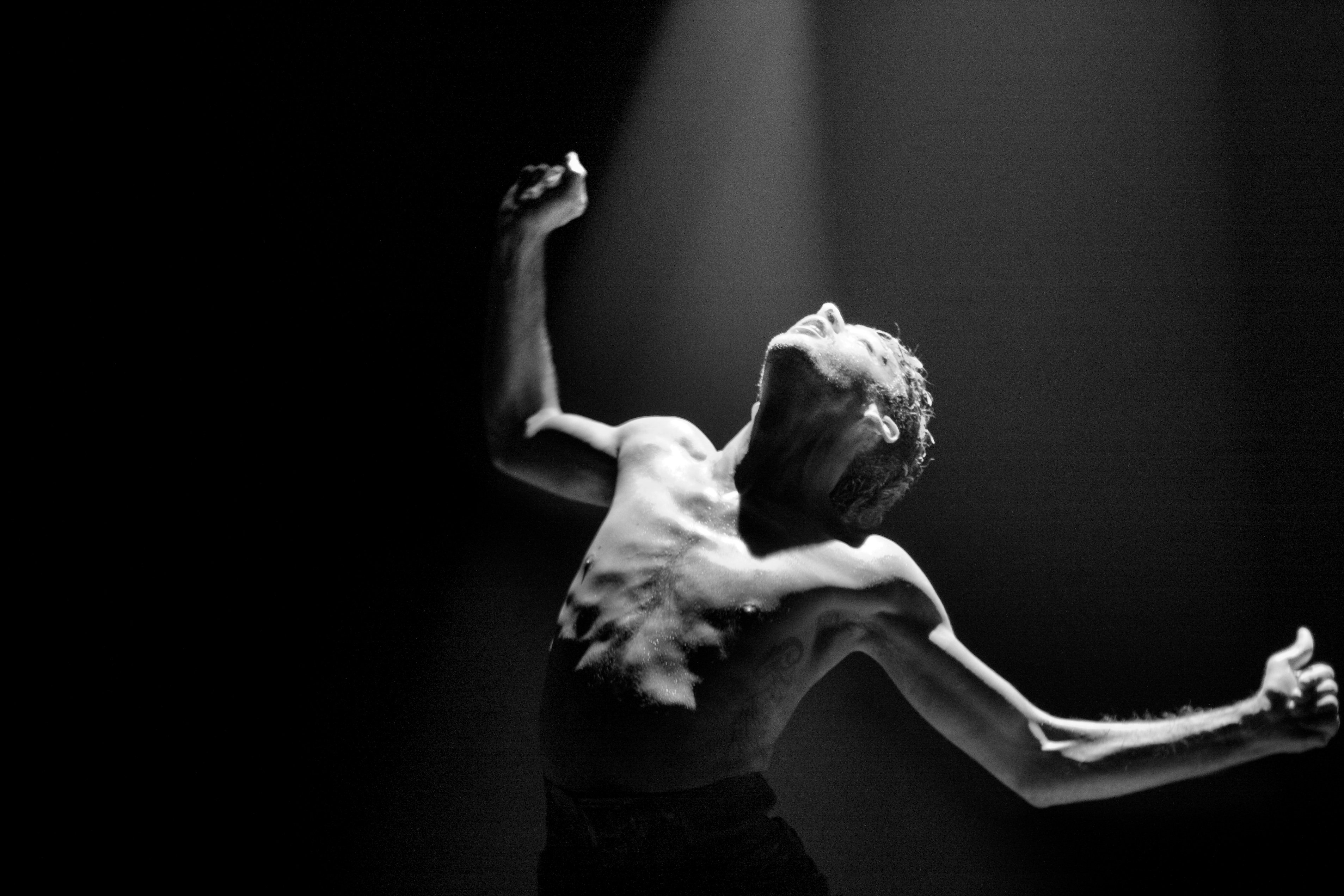Introduction
Andrea Miller, artistic director of Gallim Dance, creates high-energy, vigorous, sweaty dances. The dancers are gauche and glamorous, detailed, precise, and abandoned as they explore movement and emotion in evening-length abstract yet character-filled works. Miller’s pieces feel episodic, and their effects are cumulative. Opposition threads through the work, with contrasts between control and risk, interaction and individuation. Her choreography is awkward, calculating, explosive, bombastic, twitching; it is grotesque in the best possible way. While these are perhaps not the words that one thinks of as aesthetic terms for describing contemporary dance, Gallim Dance is all of these things, and is simultaneously tender, virtuosic, and compassionate.
Miller’s dance career started early and has moved at full speed ever since. After studying with the University of Utah’s Children’s Dance Ensemble and Ernestine Stodelle, Miller graduated from Juilliard and spent two years in Israel where she danced with Batsheva Ensemble. The Batsheva Ensemble is a training program and performance company for emerging professional dancers, founded by Ohad Naharin in 1990. In her two years with the ensemble, Miller was inspired by her experience with Gaga, Naharin’s sensation-based improvisatory movement language. As she explained to Arts Atlanta dance writer Kathleen Wessel, Miller “was inspired by what she saw in her Gaga classes and says they made her want to ‘run to the studio to figure it out,’ that is, to create set movement based on her experiences.” (Kathleen Wessel, “Review: Gallim Dance puts the ‘mod’ in modern dance in enthralling Rialto performance” ArtsATL, Feb 19, 2013. http://www.artsatl.com/review-gallim-dance-puts-mod-modern-dance-enthralling-rialto-performance/ Retrieved 30 October 2016)
Miller’s experience with Naharin and with Gaga has had a notable influence on Miller’s development as a choreographer. From the outset, her curiosity and choreographic ambition “raised her profile with their visceral, go-for-broke physicality, and her gift for locating the beauty in the grotesque. Brimming with primal energy and set to dynamic, unexpected musical selections, they announced a new choreographic voice.” (Susan Reiter, “Collaboration, From the Beginning to the Final Box: Andrea Miller of Gallim Dance” New York Times September 25, 2013)
Career
Right from the beginning of her choreographic career, Miller realized that she could not—nor does she want to—escape the music and culture and the history of her own life. Born of one Spanish and one American Jewish parent, she knows she is influenced by that lineage. Unlike early modern dancers who might have claimed a kind of universality in their work, Miller is interested in specificity—and how it relates to other people’s particularity or perhaps doesn’t relate.
When she founded Gallim Dance in 2007, Miller gathered a group of dancers together to ask two big questions. One, why do we want to move? And, two, why do we want to be in the theater?
While Gallim was still a young company at the time of their 2009 Pillow season, Miller said in a post-performance discussion that “many of our works start with a lot of improvisation—catching the groove of the music or the sort of contagious feel from the music.” That improvisation, she explained, “leads to a certain physicality or demon or thickness or softness.” The music may change but the “contagion” remains. From that movement generation, a structure and concept for the work emerges.
With Blush, performed at the Pillow in 2009, Miller began the improvisation process with three words that contained a sense of both physicality and theatre: catch, escape, and rescue.
The work contains three distinct duets, one for two women, one for a man and a woman, and one for two men. While duets can be interchangeable, or as she terms it “exchangeable” and men and women learn all the roles, Miller also “finds that the individual dancer brings a lot of information to the duet” even if the form remains the same. In the duet for the women, the dancers get extraordinarily close to one another, but never bump into each other. Each is acutely aware of the size, shape, and movement path of her partner’s body. The duet for the man and woman is at once humorous and poignant. They move with exaggerated characterizations, deliberately ill at ease but also lovely in their coming together. The duet for the men is athletic, starting off in a pedestrian manner, running in a big circle around the stage. As they enter the space together, it is at once combative, like wrestling, and collaborative. They work together, they compete.
Gallim Dance also performed on the Gala in 2009, presenting I Can See Myself in Your Pupil. The exuberance, playful swagger, splayed joints, and confident sexiness displayed by the dancers suggest full-throttle living.
Gallim Dance first performed at the Pillow on Inside/Out in 2008. Miller and longtime company member Troy Ogilvie taught in The School at Jacob’s Pillow in 2011. Since her performances at the Pillow, Miller has been presented widely in New York and at nationally renowned venues. She has received several choreography awards, including a Guggenheim Fellowship.
PUBLISHED March 2017


